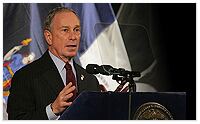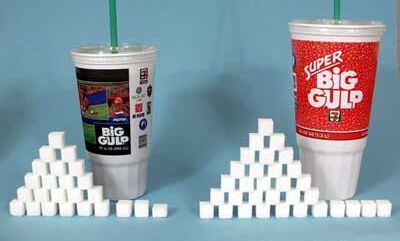In a paper published in The American Journal of Clinical Nutrition, researchers at Columbia University's Mailman School of Public Health analyzed 19,147 dietary records from the National Health and Nutrition Examination Surveys (NHANES) in the years 2007/8 and 2009/2010 to explore SSB consumption habits by age, income and BMI.
Adolescents are the biggest consumers of large sugar-sweetened beverages bought in foodservice outlets
Looking first at age, they found that 7.2% of children and 7.6% of adults Americans bought sugar sweetened beverages in portions bigger than 16oz from a foodservice establishment of the type covered in Bloomberg’s proposed super-size soda ban on any given day.
Drilling down further, they found that adolescents and young adults were the biggest consumers of large sugary drinks, with 11.8% of adolescents aged 12–19 years and 11.1% young adults aged 20–44 years consuming at least one SSB on the surveyed day larger than 16 oz from a food-service establishment.
Low income Americans are not more likely to buy big sugary drinks from food service outlets than high-income Americans

Looking next at income, one unexpected finding was that while low-income Americans are generally more likely to consume sugary drinks than higher-income groups, they are not more likely to buy big sugary drinks from food service outlets than wealthier people.
In fact, according to the NHANES data, Americans with incomes low enough to qualify for the Supplemental Nutrition Assistance Program (SNAP) were found to consume large sugary drinks from food service establishments in equal proportion to those with higher incomes, said co-author Dr Y. Claire Wang.
“Buying a large soda and drinking it at home costs less. “
Overweight and obese people more likely to consume large sugary beverages than other groups
Looking at consumption habits according to body-mass-index (BMI), they found that overweight (with a BMI of 25+) and obese people (BMI of 30+) were more likely to consume large sugary beverages than other groups.
“Overweight and obese individuals—in particular children 6–11 years of age and young adults—are more likely to consume large portion-sized SSBs than their normal-weight peers.”
Bloomberg’s ban would likely have the greatest effect on adolescents and young adults

So what would be the likely impact of a cap at 16oz?
“A policy to cap portion size is likely to result in a modest reduction in excess calories from SSBs, especially among young adults and children”, conclude the authors.
“Our analysis also found that the proposed policy would likely have the greatest effect on adolescents and young adults. More importantly, this ban is likely to disproportionately reach young consumers who are currently overweight or obese.”
If you assume that people buying a larger soda do a straight switch to a 16oz soda, said the authors, “we estimated that the proposed restriction would result in a reduction in calories by up to 102 kcal/day in adults and up to 99 kcal/day in youths.”
A more realistic assumption, they say, would be that 80% of large soda drinkers downsize to a 16-ounce soda and 20% splurge on two 16oz sodas. In this scenario, adults would cut 63 calories daily, while children and teens affected by the policy would cut 58 calories.
Would consumers downsize, buy two, or just go to the grocery store next door?
Of course, no one knows whether either scenario is likely, observe the authors.
Indeed, they add, it "remains a possibility that price-conscious consumers are more likely to purchase a large-sized beverage at locations exempt from the NYC-style policy, such as bodegas and grocery stores, instead of ordering from restaurants".
Meanwhile, the "extent to which consumers would downsize as intended by Mayor Bloomberg's proposed policy or purchase from locations not subject to the policy and the potential change in business practices (eg, offering 2-for-1 deals) by food-service establishments are questions that can only be answered through empirical research", they point out.
"The net effect on population weight status is therefore uncertain."
Commenting on the findings, Sandro Galea, MD, DrPH, chairman of the department of Epidemiology at the Mailman School and a member of the New York City Board of Health, said: "This is an important study. It provides critical foundational evidence that the proposed efforts to restrict marketing of large sodas in New York City and elsewhere can have a substantial impact on population health."
Source: The American Journal of Clinical Nutrition 2013 ajcn.054833; First published online June 12, 2013.
‘Caloric effect of a 16-ounce (473-mL) portion-size cap on sugar-sweetened beverages served in restaurants’
Authors: Y. Claire Wang, MD, ScD and Seanna M. Vine, MPH
Click here to read the latest research on exactly where Americans’ calories are coming from.
